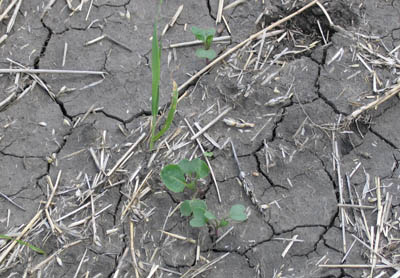Growers face a tough decision whenever a large percentage of their stand is lost to frost damage or wind or any other factor — will it pay to reseed?
Research and grower experience over the years have shown that uniform stands of 1-2 plants per square foot will often outyield or match the yield of a reseeded crop with a much denser stand. Weed control is a key factor in getting the most out of a thin stand. And given that yield potential is similar, the original crop will likely pencil out as more profitable because it doesn’t include reseeding costs.
Lower expectations. A thin stand will not have the same yield potential as a thick stand seeded at the same time. A thin stand will likely require an increased investment in weed control (two sprays instead of one, perhaps). Also, a thin stand will present more challenges for timing of disease management (it will have a much longer flowering time for sclerotinia management) and choosing a harvest timing will be more difficult with all the branching. But a thin stand seeded early will have equal or better yield potential than a thick stand seeded 2-3 weeks later.
Reseeding can make sense if plants stands are lower than 1-2 per square foot and if the stand is not uniform (patchy). If part of a field is OK and the rest is marginal, growers may choose to reseed only the marginal area. A crop reseeded in May can catch up somewhat to an early seeded crop — maturity may be only a week to 10 days later than a crop seeded three weeks earlier
If a grower decides to reseed, the best management decision would be to spray out the old crop and start fresh. Overseeding into the old stand will give 2 distinct stages of crop, creating difficulties for disease management and harvest staging. One option to remove the old crop would be to switch to a different system and spray out volunteers/old crop that way.
When reseeding patches, consider using an earlier-maturing variety so patches mature at as close to the same time as first-seeded plants throughout the rest of the field as possible.

